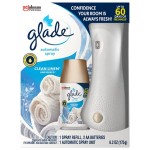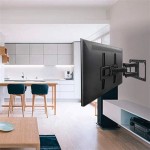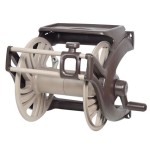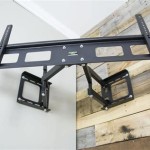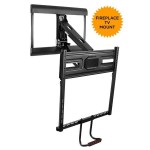Commercial Wall Mount Soap Dispenser: A Hygienic and Efficient Solution
Commercial wall mount soap dispensers are ubiquitous features in public restrooms, healthcare facilities, restaurants, and various other environments where maintaining hygiene is paramount. Their design, functionality, and material composition are geared towards facilitating easy handwashing while minimizing waste and promoting overall cleanliness. Understanding the types, benefits, and factors to consider when selecting a commercial soap dispenser is crucial for businesses and facility managers seeking to implement effective hand hygiene protocols.
These dispensers offer a hands-free or minimal-touch dispensing method, significantly reducing the risk of cross-contamination compared to sharing a bar of soap or using soap bottles. The secure mounting system discourages theft and vandalism, making them a more economical and reliable option than freestanding dispensers. Furthermore, wall-mounted dispensers contribute to a cleaner and more organized restroom environment by eliminating clutter and preventing spills.
Types of Commercial Wall Mount Soap Dispensers
The market offers a diverse range of commercial wall mount soap dispensers, each with its unique characteristics and suitability for specific applications. Common types include manual dispensers, automatic (touchless) dispensers, and foam soap dispensers. Understanding the nuances of each type is critical for making an informed purchasing decision.
Manual Dispensers: These are the most traditional type of wall mount soap dispenser, requiring users to physically depress a lever or push a button to dispense the soap. Manual dispensers are generally more affordable than automatic models and are relatively simple to maintain. They are suitable for environments where cost is a primary concern or where there is no readily available power source for automatic dispensers. However, manual dispensers inherently involve contact, which can potentially contribute to the spread of germs, although this risk can be mitigated with proper handwashing techniques.
The construction of manual dispensers often involves durable materials like stainless steel or impact-resistant plastic to withstand frequent use and potential vandalism. The internal mechanisms are typically designed for longevity, with replaceable pumps or valves that can be easily serviced. Manual dispensers are compatible with a wide variety of soap types, including liquid soap, lotion, and hand sanitizer, providing flexibility in product selection.
Automatic (Touchless) Dispensers: These dispensers utilize infrared sensors to detect the presence of hands beneath the nozzle, automatically dispensing a pre-determined amount of soap. Touchless operation significantly reduces the risk of cross-contamination, making them a preferred choice for healthcare facilities, food processing plants, and other environments where hygiene is of utmost importance. While typically more expensive than manual dispensers, automatic models offer enhanced hygiene benefits and can potentially reduce soap waste by dispensing controlled portions.
Automatic dispensers require a power source, either through batteries or a direct electrical connection. Battery-operated models offer greater flexibility in installation, while direct-wired models eliminate the need for battery replacements. The internal mechanisms of automatic dispensers are more complex than manual models, involving sensors, pumps, and electronic control systems. These components require periodic maintenance and may be more susceptible to failure compared to the simpler mechanisms of manual dispensers. However, the enhanced hygiene benefits of touchless operation often outweigh the increased maintenance requirements.
Foam Soap Dispensers: These dispensers are specifically designed to dispense soap in the form of foam. Foam soap offers several advantages over liquid soap, including reduced soap consumption, enhanced lathering, and a more luxurious handwashing experience. Because the soap is pre-mixed with air to create foam, less soap is needed per wash, resulting in cost savings and reduced environmental impact. Foam soap dispensers are available in both manual and automatic versions, offering a range of options to suit different budgets and hygiene requirements.
Foam soap dispensers require the use of specialized foam soap formulations. Using regular liquid soap in a foam dispenser will not produce the desired foam consistency and may damage the dispenser's internal mechanisms. The pumps and valves in foam soap dispensers are designed to create a specific air-to-soap ratio, ensuring optimal foam production. Regular cleaning and maintenance are essential to prevent clogging and ensure consistent foam dispensing.
Key Benefits of Using Commercial Wall Mount Soap Dispensers
The adoption of commercial wall mount soap dispensers offers a multitude of advantages compared to alternative handwashing solutions. These benefits encompass improved hygiene, cost-effectiveness, enhanced user experience, and simplified maintenance, making them a valuable investment for businesses and facility managers.
Improved Hygiene: This is arguably the most significant benefit. By minimizing physical contact, particularly with automatic dispensers, the risk of spreading germs and bacteria is significantly reduced. This is crucial in environments where hygiene is of paramount importance, such as hospitals, food processing plants, and schools. The hands-free operation of automatic dispensers prevents the transfer of contaminants from surfaces to hands, promoting a healthier environment for employees, customers, and visitors. Even manual dispensers, when properly used in conjunction with effective handwashing techniques, offer a considerable improvement in hygiene compared to sharing a bar of soap.
The use of sealed soap cartridges or bags further enhances hygiene by preventing contamination of the soap supply. These cartridges are easily replaced, minimizing the risk of introducing bacteria or other contaminants into the dispenser. Regularly cleaning and disinfecting the exterior of the dispenser is also essential to maintain a hygienic environment.
Cost-Effectiveness: While the initial investment in wall mount soap dispensers may be higher than alternative solutions, the long-term cost savings can be substantial. Soap dispensers are designed to dispense controlled amounts of soap, preventing overuse and waste. Automatic dispensers, in particular, can significantly reduce soap consumption by dispensing only the necessary amount of soap for effective handwashing. Foam soap dispensers offer even greater cost savings due to the reduced amount of soap required per wash.
Furthermore, wall mount dispensers are more durable and resistant to vandalism than freestanding dispensers, reducing the need for frequent replacements. The secure mounting system prevents theft and damage, further minimizing costs. By reducing soap waste and minimizing replacement costs, commercial wall mount soap dispensers offer a cost-effective solution for hand hygiene.
Enhanced User Experience: Wall mount soap dispensers contribute to a more positive and convenient handwashing experience. The dispensers are easily accessible and dispense soap quickly and efficiently, encouraging regular handwashing. Automatic dispensers provide a particularly convenient experience by dispensing soap without the need for any physical contact. The use of foam soap can also enhance the user experience by providing a more luxurious and satisfying lather.
The clean and organized appearance of wall-mounted dispensers also contributes to a more pleasant restroom environment. By eliminating clutter and preventing spills, wall mount dispensers create a more hygienic and inviting space for users. Clear signage and instructions on proper handwashing techniques can further enhance the user experience and promote effective hand hygiene practices.
Factors to Consider When Choosing a Commercial Wall Mount Soap Dispenser
Selecting the appropriate commercial wall mount soap dispenser requires careful consideration of various factors, including the intended use environment, budget constraints, maintenance requirements, and aesthetic preferences. A thorough assessment of these factors will ensure that the chosen dispenser meets the specific needs of the facility and provides optimal performance and value.
Environment and Usage: The specific environment in which the dispenser will be used is a crucial factor in determining the appropriate type of dispenser. High-traffic areas, such as public restrooms and cafeterias, may require more durable and high-capacity dispensers. Healthcare facilities and food processing plants should prioritize automatic, touchless dispensers to minimize the risk of cross-contamination. In low-traffic areas, such as private offices or small businesses, manual dispensers may be sufficient. The frequency of use and the number of users will also influence the choice of dispenser capacity and durability.
Consideration should also be given to the specific soap type that will be used in the dispenser. Some dispensers are designed for specific soap formulations, such as foam soap or hand sanitizer. Using the wrong type of soap can damage the dispenser or result in poor performance. It is essential to choose a dispenser that is compatible with the desired soap type and that is designed for the specific environment in which it will be used.
Budget and Cost: The initial cost of the dispenser is an important consideration, but it is also essential to consider the long-term costs associated with maintenance, soap refills, and potential repairs. Automatic dispensers typically have a higher initial cost than manual dispensers, but they may offer long-term cost savings due to reduced soap consumption. Foam soap dispensers also offer potential cost savings due to the reduced amount of soap required per wash.
Consider the cost of soap refills and the frequency with which they will need to be replaced. High-capacity dispensers can reduce the frequency of refills, minimizing labor costs. Also factor in the cost of batteries or electrical connections for automatic dispensers. A thorough cost-benefit analysis will help determine the most cost-effective dispenser for the specific needs of the facility.
Maintenance and Durability: The ease of maintenance and the durability of the dispenser are important factors to consider, especially in high-traffic environments. Choose dispensers that are easy to clean and that are made from durable materials, such as stainless steel or impact-resistant plastic. Look for dispensers with replaceable parts, such as pumps and valves, to extend their lifespan.
Consider the frequency with which the dispenser will need to be cleaned and refilled. High-capacity dispensers can reduce the frequency of refills, minimizing labor costs. Automatic dispensers may require periodic maintenance of their sensors and electronic components. Choose dispensers that are easy to disassemble and clean, and that are designed for long-term reliability.

Matt Black Soap Dispenser Wall Mounted Victorian Plumbing

Smedbo Home Wall Mounted Chrome Soap Dispenser Hk370

Richmond Wall Mounted Soap Dispenser Bathrooms Fired Earth

Nameeks Ncb71 Soap Dispenser General Hotel Nameek S

Thomas Crapper Elegant Wall Mounted Soap Dispenser Old Fashioned Bathrooms

Stilhaus El30 By Nameek S Elite Soap Dispenser Classic Style Wall Mounted Glass Thebathoutlet

Antique Georgian Wall Mounted Dispenser Deluxe Design By Devon

Soap Dispenser Holder Aesop Wall Mounted Bottle Stainless Steel Bracket For Dispensers Shampoo Etsy

Stilhaus Me30 23 Soap Dispenser Medea Nameek S

John Lewis Opus Wall Mounted Soap Dispenser Clear Chrome

